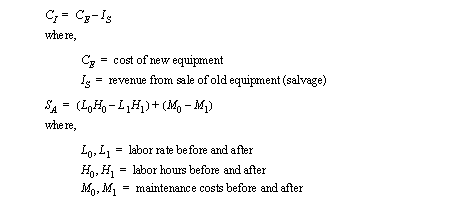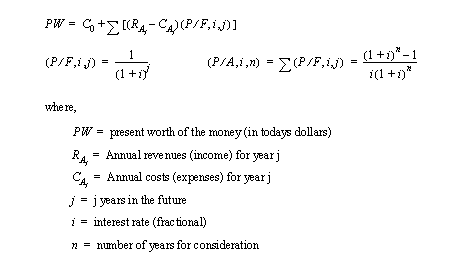
• There are a number of factors in a company which must be considered when evaluating the need for CAD/CAM/CAE/CIM/etc systems. Some of these are listed below,
- markets Niche/Global/Home/ etc.
- corporate objectives, mission and culture
• Current popular planning strategies include,
- effective capital investments
- continuous flow manufacturing and vendor supply
- business and process reengineering
- simplifying and automated processes
- increased information access
• We can draw a chart that illustrates the issues that might be encountered,

• When considering the economic value of a decision, one method is the payback period.

• Simple estimates for the initial investment and yearly savings are,

• There are clearly more factors than can be considered, including,
• The simple models ignore the conversion between present value and future value. (ie, money now is worth more than the same amount of money later)

• Quite often a Rate of Return (ROR) will be specified by management. This is used in place of interest rates, and can include a companies value for the money. This will always be higher than the typical prime interest rate.
• So far we haven’t considered the effects of taxes. Basically corporate taxes are applied to profits. Therefore we attempt to distribute expenses evenly across the life of a project (even though the majority of the money has been spent in the first year). This distribution is known as depreciation.

• Methods for depreciation are specified in the tax laws. One method is straight line depreciation.

• Consider an assembly line that is currently in use, and the system proposed to replace it. The product line is expected to last 5 years, and then be sold off. The corporate tax rate is 50% and the company policy is to require a 17% rate of return. Should we keep the old line, or install the new one?
